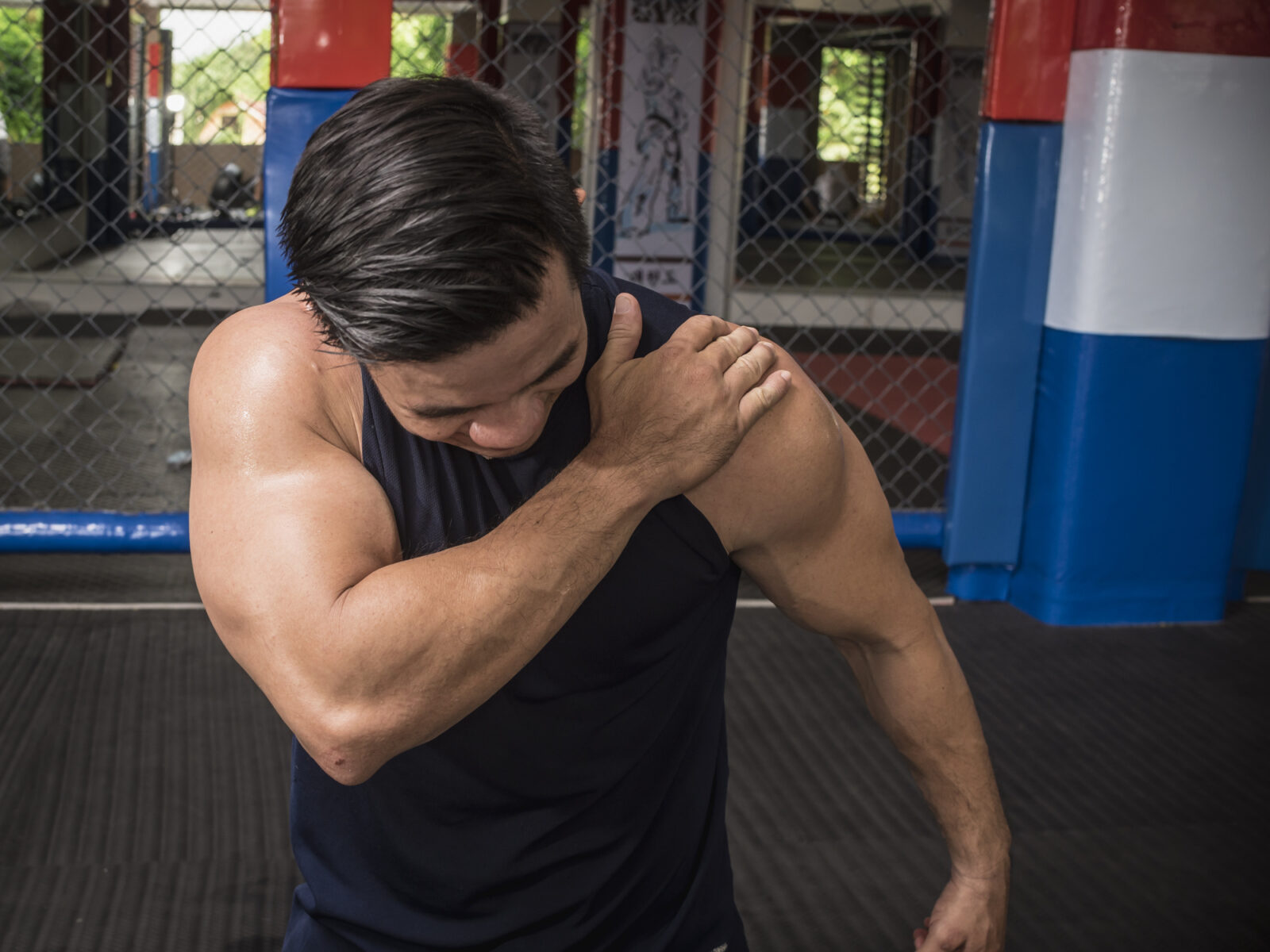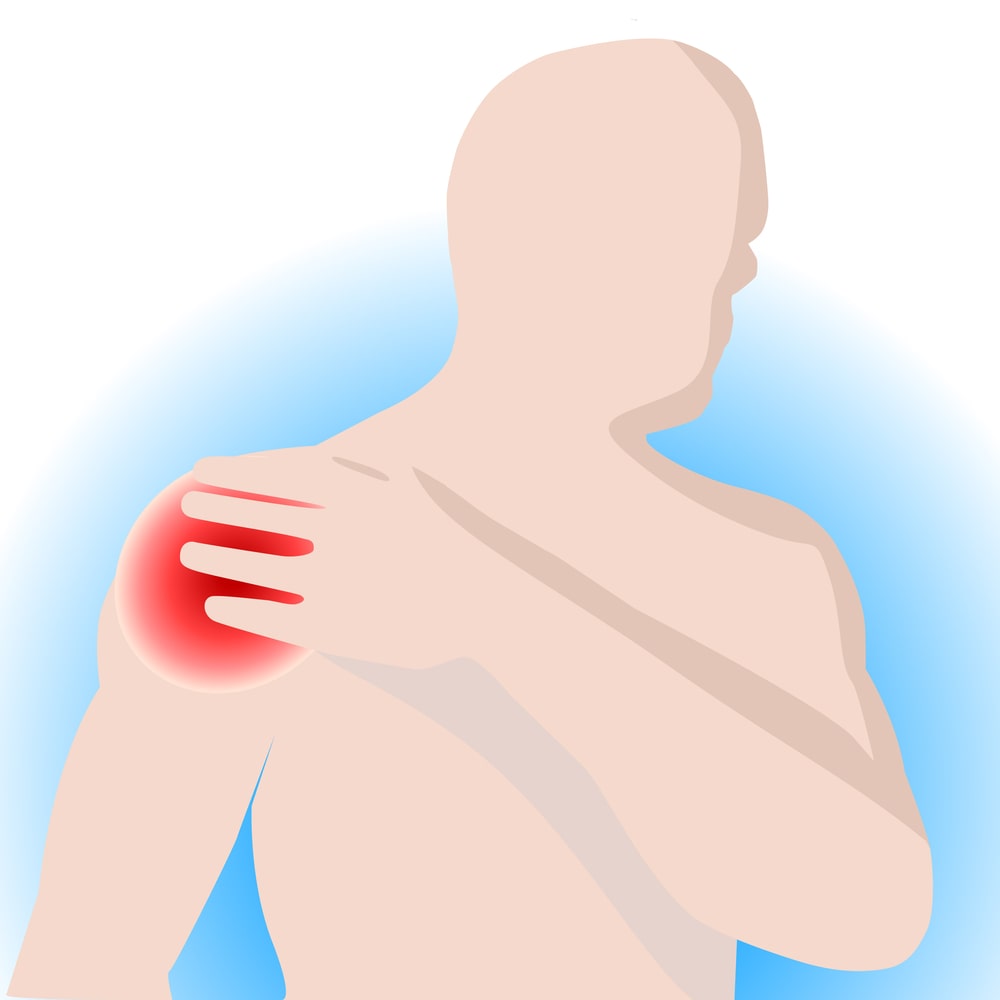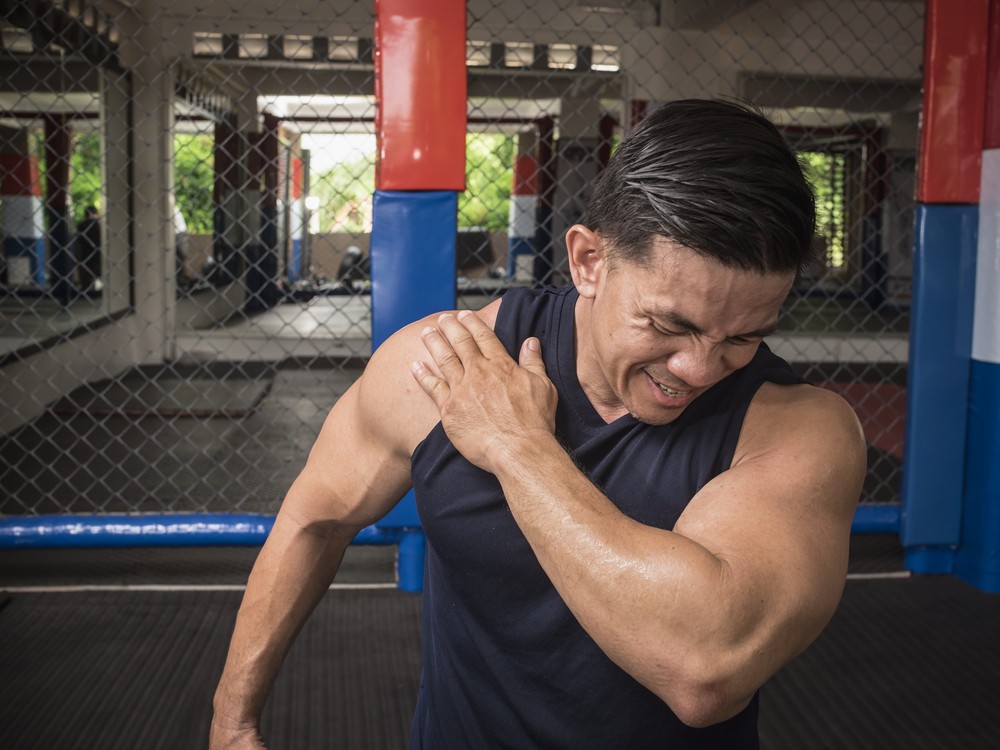Shoulder impingement syndrome is a painful condition that is caused by a spectrum of conditions from shoulder subacromial bursitis to rotator cuff tendonitis. This pain is often consistent and worsens over time, especially when an individual raises their arm forward over their head repetitively.
Because the shoulder is the most mobile joint in the body; its surrounding ligaments, tendons, and muscles are particularly susceptible to injuries and irritation. You may have experienced pain from shoulder impingement after playing sports like tennis, volleyball, basketball, weightlifting, or competitive swimming. Incorporating sports medicine principles can help in designing effective exercise regimens for shoulder impingement.
What do you do to treat the pain?
We’ll cover everything you need to know about shoulder impingement injuries and the exercises that can help relieve the pain:
What Is Shoulder Impingement Syndrome?
Shoulder impingement syndrome stems from inflammation in the shoulder. Many people refer to impingement syndrome as swimmer’s shoulder, where the bursa in the shoulder and/or the rotator cuff tendons becomes inflamed and degraded over time. The inflammation is the result of overusing the shoulder or injuring it during repetitive actions, such as painting, lifting, swimming or overhead sports. Other risk factors can include bone and joint abnormalities. If this type of pain persists, especially at a young age, it’s important to have the condition evaluated by a musculoskeletal physician such as an orthopedic surgeon.
Your shoulder meets at the top of the upper arm, shoulder blade and collarbone. To ensure these bones are safe and secure, your rotator cuff (a complex network of muscles and tendons) surrounds the shoulder joint to protect it. Your rotator cuff is also responsible for holding your upper arm within the shoulder socket. Furthermore, a fluid-filled sac, known as the bursa, provides cushioning around the shoulder joint. The bursa also helps you move your shoulder freely without friction.
However, impingement syndrome can occur when you elevate your arm repetitively with force, causing your rotator cuff tendons and bursa to rub up against your acromion bone causing inflammation and pain.
Shoulder Impingement Symptoms
One of the most common symptoms of shoulder impingement is experiencing difficulty lifting your arm past your shoulder. For some, reaching behind your back may also cause pain and discomfort.
Shoulder impingement is sometimes also accompanied by shoulder stiffness. The pain may cause a throbbing-like feeling in the shoulder, followed by swelling. Your shoulder will likely be sore and stiff when not in use. Whenever you eventually use your shoulder, you can anticipate it to be more painful.
Over time, if you continue performing the aggravating shoulder motion, the symptoms can accelerate, and your strength may decrease. Some people find the pain to be unbearable when sleeping on the side of the painful shoulder. In addition, moving the affected arm over your head or around your body may become challenging.
Ignoring shoulder pain like this, and “pushing through the pain”, can result in the tendons deteriorating, followed by more pain and weakness to the point where you may not be able to perform any motions or actions with your shoulder.
If you think you may have shoulder impingement, you can practice the following tests:
Test one:
- Take the hand on your affected arm and place it on your opposite shoulder and make sure you keep your elbow bent. Your elbow should be bent and rested against your chest.
- Try lifting the elbow upward toward your chin.
- Feeling pain could mean that shoulder impingement is the cause.
Test two:
- Raise one arm in front of your chest. Keep your arm at a 90-degree angle.
- Place your other arm on top and grasp your elbow.
- Start rotating the lower arm by pressing down with your elbow.
- You should feel your shoulder rotate as you slowly bring your arms toward your chest.
- If you feel pain, it’s a sign that you may have shoulder impingement.
Test three:
- Stretch your arm out in front of your body, rotate your hand, and face your thumb downward.
- Lower your arm at your side.
- Raise your arm in front of you toward the ceiling. Reach as high as you can.
- Repeat again but point your thumb outward and away from your body.
- Now compare both alternatives and determine which hurts more. If you feel pain when raising your arm with the thumb down, it may be a sign you have shoulder impingement.
Causes
The main cause of shoulder impingement is overuse. As you repeatedly use your shoulder during specific activities, the tendons can swell and rub against part of the shoulder blade that forms the “roof” of your shoulder called the acromion.
As mentioned, repetitive arm elevation can worsen the shoulder over time, especially if your profession requires you to lift your arm above your head.
Many activities that can cause shoulder impingement include the following:
- Swimming
- Tennis
- Baseball
- Softball
- Weight lifting
- Construction
- Painting
- Packing
While overuse is a culprit in the development of shoulder impingement, age can also be a factor. If you’ve spent many years using your shoulder during the above-mentioned activities, you’re more likely to experience symptoms.
Many injuries, such as a dislocated shoulder or rotator cuff tear can increase the risk of experiencing shoulder impingement syndrome.
Shoulder Impingement Exercises
A well-constructed exercise plan from a physical therapist can help with shoulder impingement pain. The following exercises can alleviate shoulder pain, but it’s crucial to get proper rest to help your body recover.
Thoracic Extension
A thoracic extension exercise can provide effective results during recovery.
How to:
- Use a foam roller or rolled-up yoga mat.
- Lie down on your back and keep your knees bent with your feet on the floor.
- Place the foam roller under your shoulder blades.
- Place your hands behind your head and extend your thoracic spine over the roll.
- Hold your position for 5-10 seconds and repeat it 10 times.
Doorway Shoulder Stretch
A doorway stretch, or chest stretch, can help loosen your chest muscles and shoulders.
How to:
- Position your elbows and hands in line on the doorframe.
- Take a step through the door slowly until you feel your muscles stretching.
- Hold your position for 15-20 seconds before returning to a standing position.
- Repeat the doorway shoulder stretch 3 times.
Shoulder Blade Flexes
Shoulder blade flexes can release tension and alleviate the stiffness from shoulder impingement.
How to:
- Stand with your back straight and your arms at your sides. Keep your palms facing forward.
- Gently squeeze your shoulder blades together and hold them for 5 seconds.
- Release and let your shoulders relax.
- Repeat 5 times.
Standing External Rotation (With Resistance Band)
A weak rotator cuff can cause impingement. A standing external rotation exercise with a resistance band can strengthen your rotator cuff muscles and retrain your body to move your shoulders the correct way.
How to:
- Start by standing at a wall with your elbows inward at your sides.
- Keep your palms up while holding the resistance band.
- Squeeze your shoulder blades together and pull the band apart by externally rotating your shoulders.
- Keep your forearms tucked in during the exercise, and make sure there’s no space between your elbows and body.
- Do 10 reps with 3 sets.
Crossover Arm Stretch
Performing crossover arm stretches can increase your flexibility and range of motion in your shoulder joint.
How to:
- Stand up straight and lift the affected arm outward in front of your body. Keep the arm below shoulder height.
- Use the opposite arm and gently pull your affected arm across your body.
- Hold the affected arm for 5-10 seconds and then relax back to the starting position.
- Repeat this stretch 5 times.
When practicing the above exercises, you should pair them with icing using an ice pack. Ice will help soothe and reduce shoulder inflammation. Over-the-counter NSAIDs can also help reduce swelling.
Exercises for shoulder impingement can decrease the risk of the condition worsening. The aforementioned stretching and exercise methods can help your shoulder move in the best ways that avoid further injuries.
If you have persistent pain in your shoulder, we encourage you to come get a professional evaluation from our team of shoulder specialists at Modern Orthopaedics of Wayne. We will evaluate your shoulder and give you a diagnosis. Often, a short course of activity modification and physical therapy for your shoulder will be enough to help you resolve the pain.






